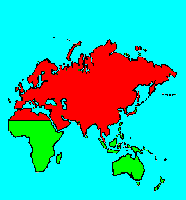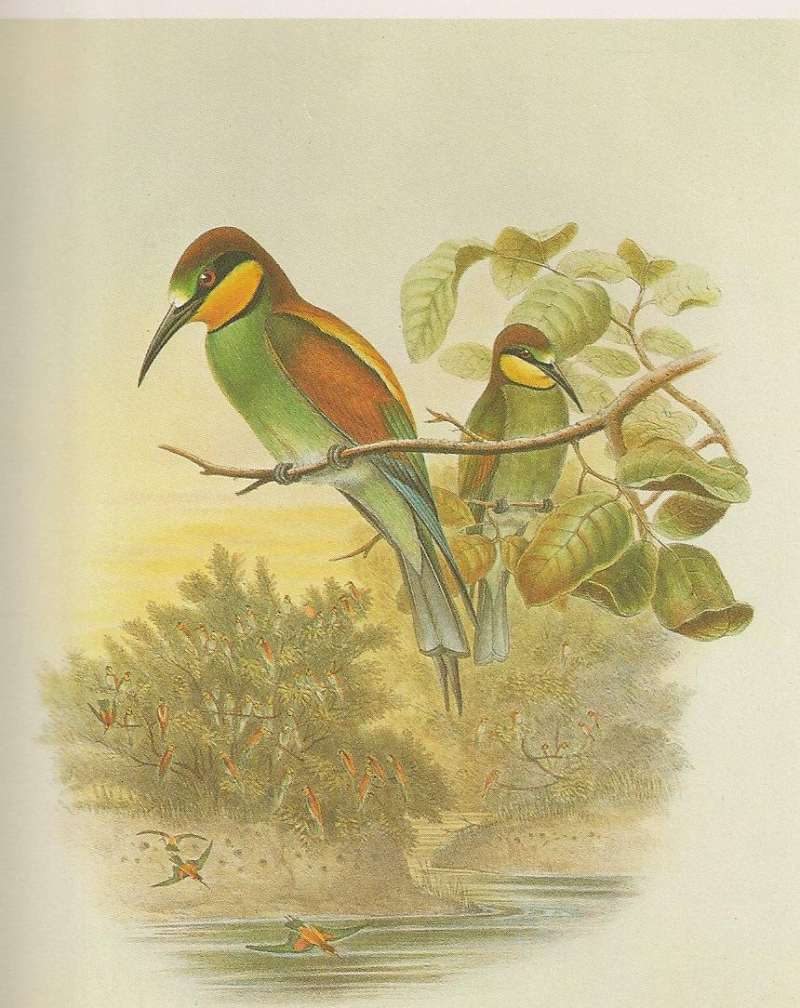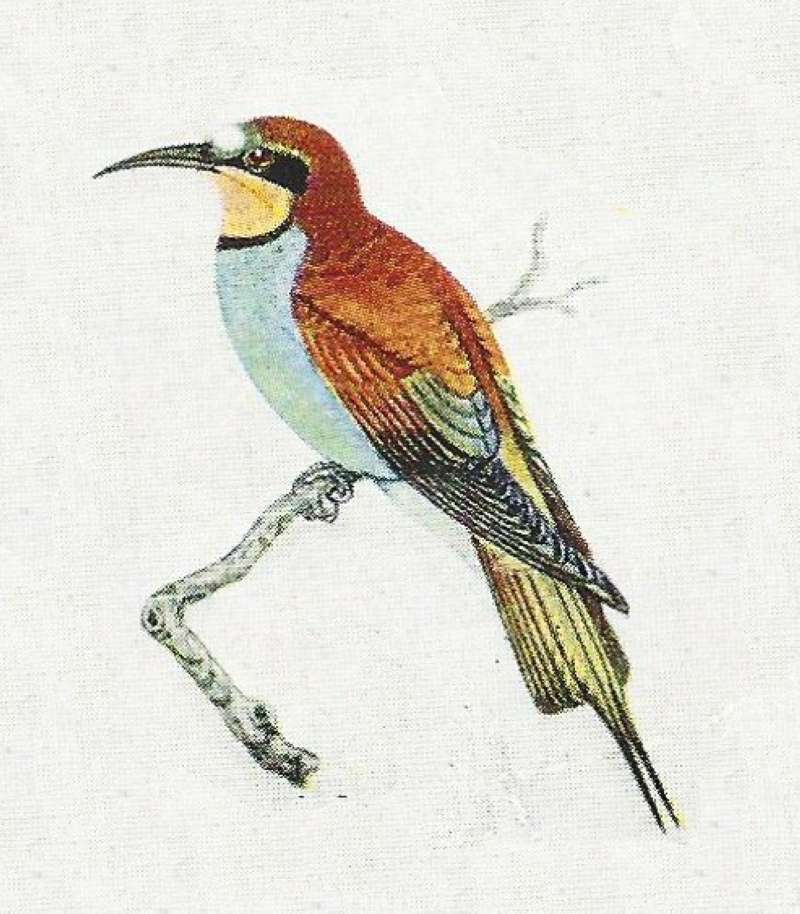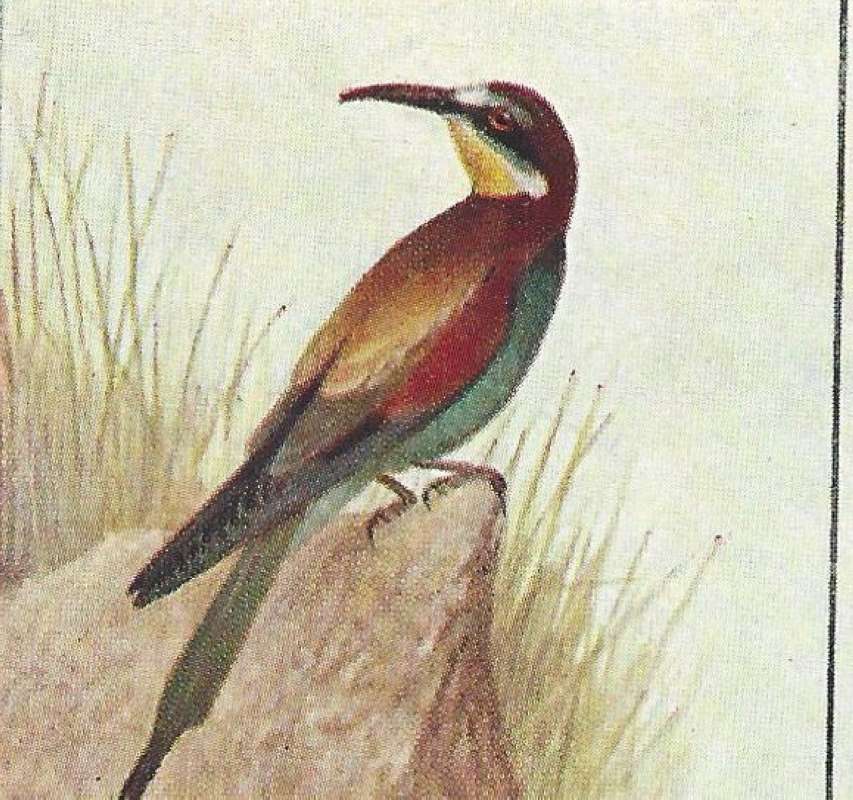SPECIES INFO
European Bee-eater (Merops apiaster) breeds in northern Africa, Europe, and much of Asia. This species is known to migrate for thousands of miles and, consequently, examples can be found as far south as South Africa. In Europe this breeds from Spain and Portugal east through southern France to Italy, and further east through Turkey and the Ukraine and further east.
The blue breast and brown underside of the wings help identify this ten-inch species. The yellow throat is also distinctive. Numerous European Bee-eaters are killed each year by those who keep bees but the species does not yet appear to be endangered. There are no subspecies.The bee-eater genus (Merops) is native to the warmer and tropical areas of the Old World. Most species are found in Africa, but species are also found in Europe, South East Asia, Indonesia, the Philippines, and Australia. There are about 23 species in the genus.
Bee Eaters (Family Meropidae) are a group of 24 Old World species that eat primarily insects. However, most of the species in the family derive a large portion of their food from bees and wasps.
Hornbills, rollers, and kingfishers (Order Coraciformes) are characterized by having their three front toes joined for a portion of their length. There are seven families in this order.
Aves contains about 8,650 different species of living birds known to science. Each year about one new species is discovered in some remote rain forest or remote island. In addition, scientists have been raising many subspecies to full species status which may raise the species count to 10,000. Birdlife recognizes 10,027 species as of 2011.
However, each year about one species goes extinct. The rate of extinction is increasing, and the rate of new discovery is decreasing, so that the number of bird species will soon begin to decline rapidly. Although different taxonomists would organize the birds differently, there are approximately twenty-seven orders of birds. These orders are broken down into about one hundred and fifty-five different families.
Recent research of the genetic structure of some of the shore birds and owls would indicate that the present organization of orders and families should have some modification.
The birds are a worldwide group of animals that are characterized by having the front limbs modified into wings that are used for flying. Perhaps the most unique feature of the birds is the feathers. These feathers are made up of a central support called a quill and a series of small filaments that are hooked together as barbs.
For many years it was believed that Archaeopteryx discovered in Bavaria was the oldest bird from about 150 million years ago. However, in l986, Sankar Chattterjee, a Texas paleontologist, reportedly discovered a bird in the genus Protoavis that lived about 225 million years ago.
When this project was begun in 1978, we used Austin & Singer for bird taxonomy. Since then, we have adopted many changes, but have kept some older concepts that are still found widely in the literature. Recently, we have used Clements and Howard & Moore. Very recently, we have used Monroe and Sibley for the higher taxonomy of the perching birds.
Backboned Animals (Phylum Chordata) are the most advanced group of animals on earth. These animals are characterized by having a spinal cord or backbone. Most members have a clearly defined brain that controls the organism through a spinal cord. Fish, amphibians, reptiles, birds, and mammals are in this phylum.
Currently, some taxonomists believe that the fish should be divided into two groups (sharks and regular fishes) and that there are some other primitive groups in the phylum such as hagfish or lampreys.
Animal Kingdom contains numerous organisms that feed on other animals or plants. Included in the animal kingdom are the lower marine invertebrates such as sponges and corals, the jointed legged animals such as insects and spiders, and the backboned animals such as fish, amphibians, reptiles, birds, and mammals.





